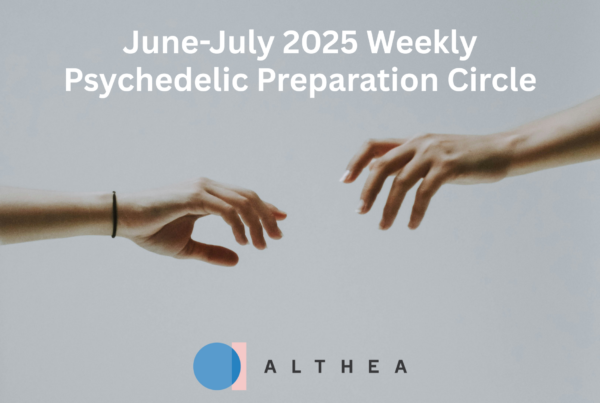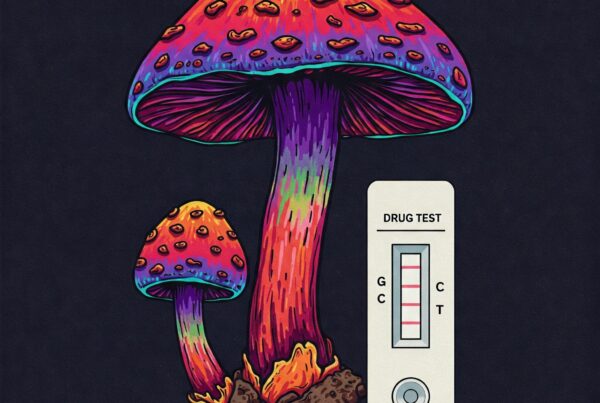
I had the opportunity to ask one of the leading researchers in psychedelics this question. You’ll find our conversation below, along with some section highlights that you might find helpful.
Scott Thompson, PhD is a professor of Psychiatry at the University of Colorado School of Medicine, the Director of the Center for Novel Therapeutics, and Director of the Psychedelic Public Policy Partnership.
Psilocybin for Depression: What Changes in the Brain?
We start with a bit of neurobiology here. Thompson is involved in a clinical trial at the University of Colorado School of Medicine that is focused on depression and psilocybin. The study aims to go beyond just asking participants how they feel, which is the common way to diagnose depression, by also measuring what’s happening in their brains.
The trial is using advanced imaging techniques like Functional Magnetic Resonance Imaging (fMRI) to measure changes in brain activity in response to rewarding stimuli, rather than relying solely on subjective self-reporting. This is intended to address a limitation of prior psilocybin studies, which often rely on asking participants if they feel better.
Anhedonia is a symptom of depression involving a lack of pleasure, and the trial is hoping that psilocybin can help correct this pattern in the brain. Scott has studied anhedonia in mice to understand the brain circuits involved in response to rewarding stimuli. The study aims to see if different parts of the brain change and how they communicate with each other after psilocybin treatment. This includes measuring changes in how the brain responds when a rewarding stimulus is given.
Results from the study are expected in the coming year, but based on prior studies in humans, and in evidence from Thompson’s work looking at anhedonia in mice, they expect to see evidence that psilocybin restores proper brain function, allowing participants to derive pleasure again.
Is the Psychedelic Experience or Neurochemistry most Important?
Users of psychedelics report dramatically altered consciousness, including visual hallucinations, mystical experiences, and epiphany. These psychedelic experiences are often cited as the reason for their therapeutic benefit and have been correlated with long-term positive outcomes. (Learn more about how researchers measure mystical experiences here.)
However, there is also evidence that something physically changes in the brain that may cause anti-depressive benefits as well. Teasing out the neurochemical effect from the experimental (or phenomenological) effect is a hot topic of research in the world of neuropsychopharmacology.
Most researchers would agree that both of these effects are important. But if a psychedelic-inspired anti-depressive drug could be created that did not produce a psychoactive “side effect”, it would be much more accessible than a large dose of psilocybin or LSD.
At the recent American College of Neuropsychopharmacology Conference (ACNP), just such a drug was discussed. Delix Therapeutics introduced a psychedelic-like compound that should not produce a psychedelic “trip” in humans, while maintaining therapeutic benefit. They refer to this class of drug as Neuroplastogens, in that they create neuroplasticity in the brain. It is yet to be tested, but the drug maker is entering clinical trials as the industry watches closely.
In short, psilocybin is thought to treat depression through a combination of neurobiological actions, such as serotonin receptor agonism and modulation of brain activity, and psychological mechanisms such as the psilocybin experience, new learning, and psychological support, resulting in long-lasting antidepressant effects.
Is Microdosing Psychedelics an Effective Treatment for Depression?
Microdosing psychedelics involves taking a fraction of the dose that would induce a psychedelic experience. Individuals often need to experiment with dosage to determine what their “sub-perceptual” dose is.
While many advocates of microdosing claim that it can enhance everyday functioning and alleviate symptoms of various health conditions, including depression, there is currently no peer-reviewed published clinical evidence that microdosing is effective. No studies have demonstrated an increase in creativity, enhancement of cognition, or sustained improvement in mood with microdosing. And most studies of microdosing have been inconclusive in showing a benefit over a placebo.
It is difficult to conduct studies with microdosing because of regulatory hurdles and the need to give participants microdoses to take home. Microdosing studies are hard to carry out because it’s difficult to isolate the effects of the microdose from the expectancy effect, which can be a powerful influence.
The placebo effect is a significant factor as well, as people who expect positive results may experience them regardless of the actual effects of the microdose. If microdosing is safe, then it’s not unreasonable to lean into these placebo effects if they’re working to create the desired benefit.
However, it is also important to consider that microdosing may have some risks…
What are the Risks of Microdosing?
A frequently cited risk in microdosing is tied to the potential for heart damage. Traditional psychedelics, like psilocybin and LSD, activate many serotonin receptors. The concern here comes in the 5-HT2B receptor (not to be confused with the frequently-discussed 5-HT2A receptor.) Chronic activation of this receptor has been linked to heart damage, as seen with the recalled drug fenfluramine that was used as an appetite depressant for weight loss.
While a single, high-dose psychedelic experience is unlikely to cause heart damage, the chronic, repeated use of microdoses could potentially pose a risk to cardiovascular health. There is a concern that repeated activation of the 5-HT2B receptor, even at low levels, may cause damage over time.
Thompson’s lab recently conducted a study in mice to test this theory. They put mice on an LSD microdosing protocol. Additionally, they gave another group of mice serotonin. The study found no signs of heart damage from microdoses of LSD, while observing damage caused by serotonin due to 5-HT2B agonism.
Thompson went on to caution that the absence of evidence does not mean there is no risk in humans. Future studies are being designed to test this more thoroughly. However, this is a good sign for microdosing safety.
Why hasn’t the FDA approved Psychedelics to Treat Depression?
The FDA has not yet fully approved psychedelic drugs for the treatment of depression, though some have received “breakthrough therapy” status, and some are approved for treatment-resistant depression.
The standard FDA drug approval process is not well-suited for psychedelic drugs. The FDA demands placebo-controlled randomized clinical trials where the only difference is the presence or absence of a drug. However, because of the psychoactive nature of substances such as psilocybin or LSD, it is impossible to blind subjects in the way that the FDA demands for every other study.
The FDA has not adjusted its stance to take into account the reality of working with unique substances such as psychedelics. The scientific evidence brought to the FDA by groups like MAPS and Lykos for MDMA to treat PTSD is overwhelmingly positive. However, there are still flaws, largely because researchers cannot blind people in these trials. Furthermore, these drugs appear to work best when combined with psychotherapy, which is another aspect that the FDA isn’t built to handle.
Hopefully, the FDA will eventually take a more holistic view and balance the potential risks of psychedelics with the potential benefits. Studies to date show the risks are manageable, with the exception of the potential risk for developing psychosis or schizophrenia-like symptoms.
Accessing Psilocybin Legally in Colorado and Oregon’s State Regulated Programs
Oregon and Colorado have taken bold steps to allow legal access to psilocybin. (Read more on these programs here.) Colorado is iterating upon the program developed by Oregon, and has taken a different approach to integrating mental health professionals into the process.
Colorado has taken a different approach to safety by establishing a two-tiered system of facilitators. There is a non-clinical tier for facilitators and a clinical tier for those with pre-existing mental health conditions, who will be seen by facilitators who are also licensed therapists or psychologists.
On the Importance of Working with a Trained Facilitator
Thompson believes that both Colorado and Oregon are taking a risk by allowing citizens to use psilocybin, but that the risks are tolerable and manageable, though not zero. He notes that despite the potential for positive outcomes, some individuals will likely have bad experiences.
The brain’s neuroplasticity can be a double-edged sword. While it offers the potential for positive change, revisiting traumatic events during a psychedelic experience can also reinforce negative patterns if not handled carefully.
It’s vitally important to find a licensed facilitator with a lot of experience who can help guide a psychedelic journey. (Learn more about choosing a facilitator here.)
Find a Licensed Facilitator who Specializes in Treating Depression
There are over 300 licensed facilitators in Oregon and hundreds more about to be licensed in Colorado. Each facilitator brings a personalized approach.
We’ll help you find the right one for you.





